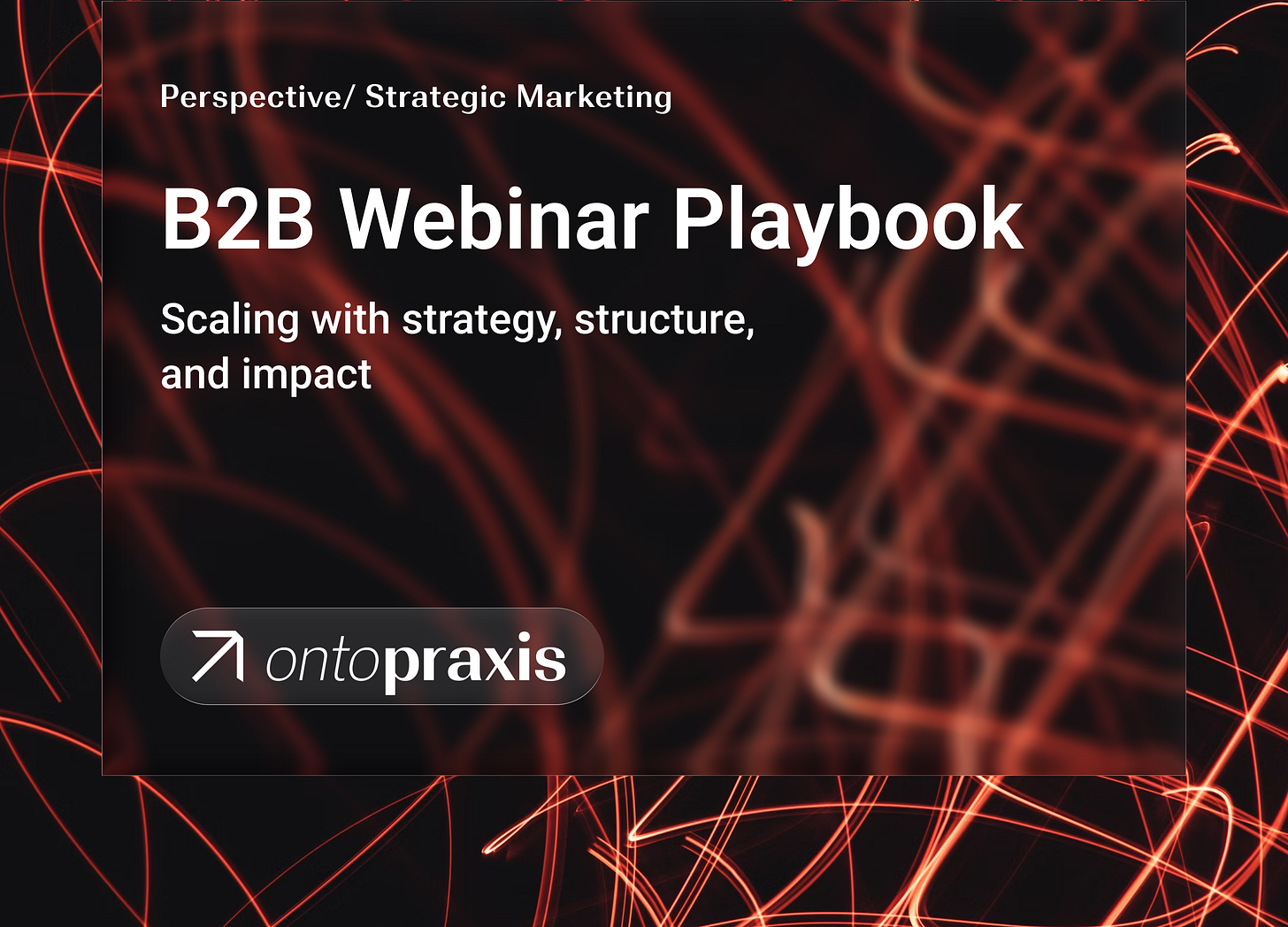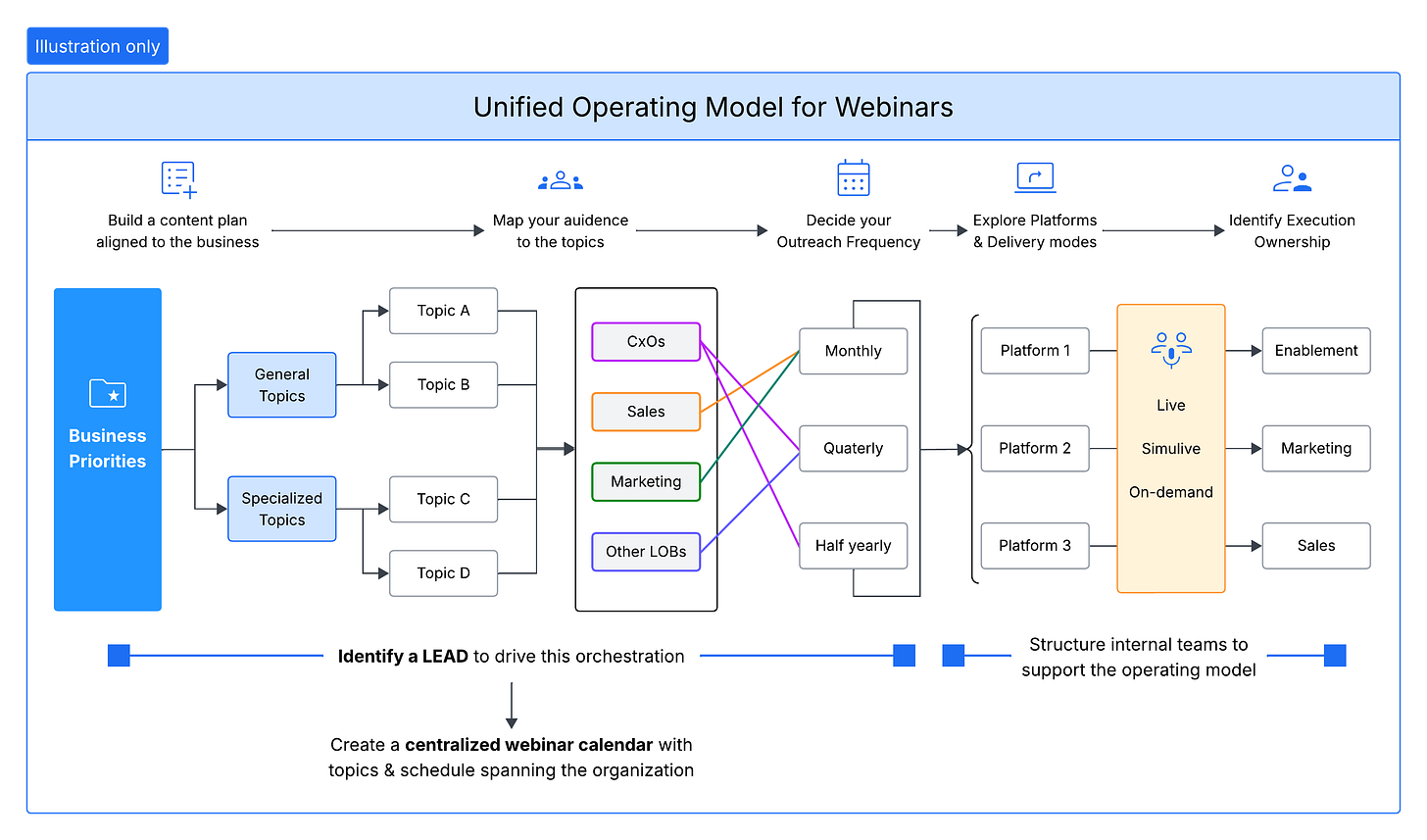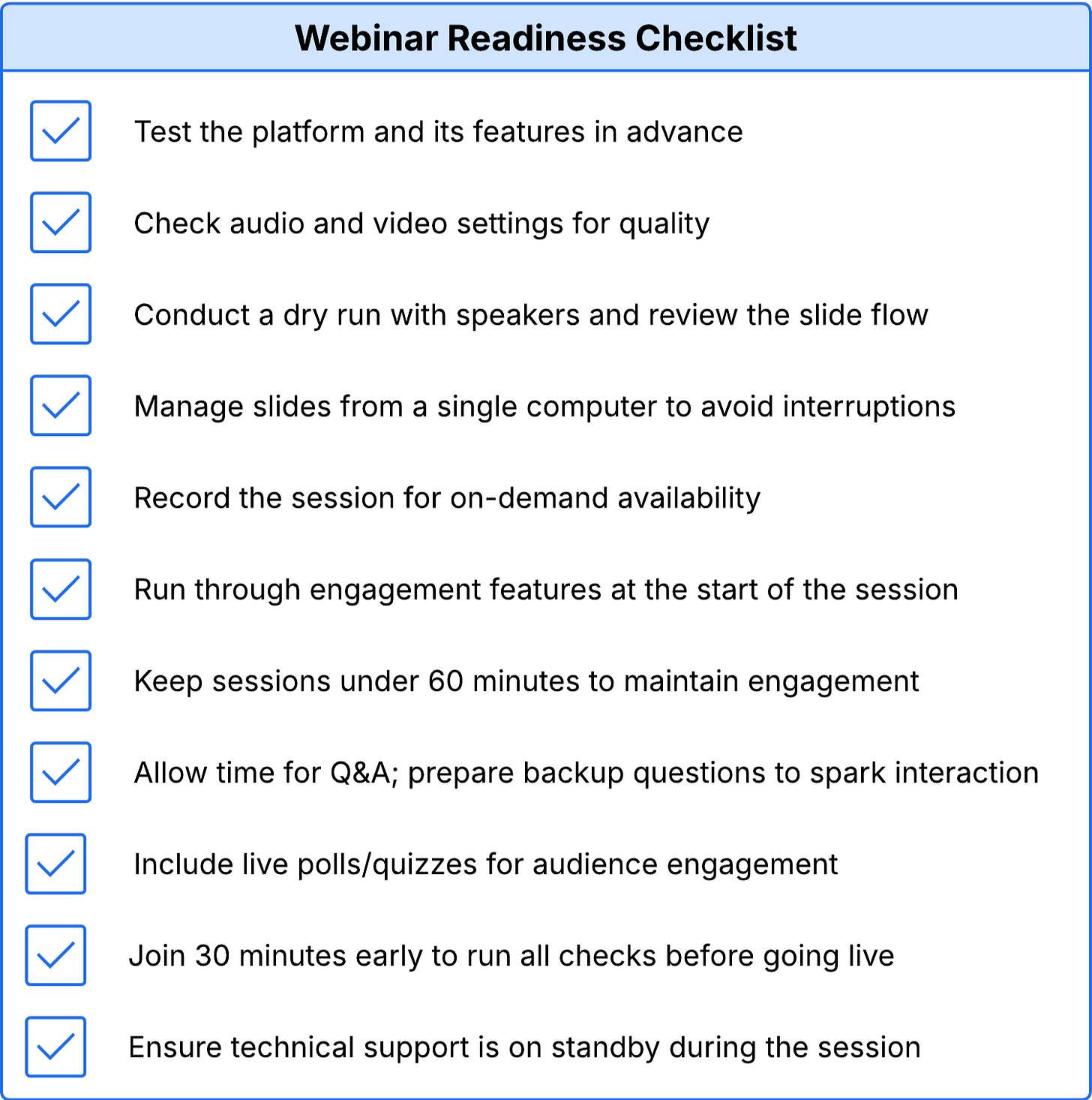Purpose of this document:
Webinars are no longer just one-off marketing tactics—they are powerful vehicles for customer outreach, thought leadership, and pipeline acceleration when built into a structured program. The objective is to design a repeatable and scalable webinar strategy that aligns to business priorities, fosters engagement, and generates measurable outcomes.Guiding principles
Business Alignment – Clearly define objectives (e.g., lead generation, customer education, brand building) and map outcomes to business goals.
Structured Planning – Develop a taxonomy of topics (general vs. specialized) and determine what’s in-scope vs. out-of-scope.
Cross-Functional Teaming – Engage SMEs, sales, and marketing with defined roles and responsibilities.
Governance & Checkpoints – Establish a review council to ensure content relevance, track progress, and maintain executive sponsorship.
Platform & Analytics – Choose the right technology platform, ensure compatibility with IT/security, and leverage analytics to measure engagement and optimize continuously.
Operating model for scalable webinars
A scalable webinar program requires structure and alignment:
Content Aligned to Business Priorities – Curate general and specialized topics tied to strategic objectives.
Audience Mapping – Match content to key personas (CxOs, sales, marketing, LOBs) for relevance.
Outreach Frequency – Tailor cadence (monthly, quarterly, half-yearly) to audience needs.
Platforms & Delivery Modes – Use the right mix of live, simulive, and on-demand formats.
Execution Ownership – Assign clear roles across enablement, marketing, and sales, with a central lead driving orchestration.
Together, this model ensures webinars are consistent, impactful, and business-driven.
Content strategy
Focus on thematic sessions, not just topical updates.
Design content with clear audience mapping (CxOs, sales, marketing, and line-of-business teams).
Blend internal and external speakers for credibility and variety.
Incorporate live learning checks, polls, or quizzes to sustain attention.
Define strong calls-to-action (CTAs) that are actionable within 1–3 months.
Keep sessions under 60 minutes with dedicated time for Q&A.
Audience experience
Develop a dedicated webinar hub/page with upcoming sessions, recordings, and resources organized by persona.
Provide descriptive agendas with objectives, target audience, speaker bios, and session duration.
Ensure registration-based access but avoid excessive gating to maximize participation.
Promote actively through leadership endorsements and social sharing
Amplification strategy
Pre-Event – Use CRM databases, opt-in practices, targeted eDMs, social posts, email signatures, and field resources. Provide 2–3 weeks’ notice and send 3–5 touches per webinar, with a final reminder an hour before the event.
During Event – Drive interaction with polls, quizzes, and pre-submitted questions.
Post-Event – Send thank-you emails with recording and slides, promote related upcoming webinars, reward participation, and follow up with engaged attendees.
Be Ready, Go Live, Engage
A successful webinar hinges on preparation. This checklist ensures your session runs smoothly, covering technology, speaker readiness, audience engagement, and support, so you can focus on delivering impact.
Platform choices
Key Considerations
Organizational Fit: The selection process should align with your company’s procurement, legal, and IT policies.
Evaluation Criteria: Beyond pricing, assess platforms for:
Compatibility with IT systems
Security and compliance
Participant capacity and scalability
Ease of use for both presenters and attendees
Rich feature set (polling, Q&A, breakout rooms, analytics, etc.)
Availability of training and support
Market adoption (how widely the tool is used, which impacts familiarity for participants)Playbook - B2B Webinar strategy…
Additional Options
Third-Party Agencies: Some companies opt to partner with event agencies that host webinars on their proprietary platforms, offering white-glove support.
Analytics: Ensure the platform provides granular engagement data to help measure performance and improve future sessions.
Success metrics
Short-Term Metrics
Registrations, attendance, conversion rates, time spent, and feedback.
Long-Term Metrics
On-demand views, repeat participation, downloads, engagement scores, and sales follow-ups.
Success depends on a combination of content quality, speaker effectiveness, experience design, and audience engagement.
Webinars, when designed with strategy and structure, go far beyond being one-off marketing activities—they become engines of engagement, education, and growth. By aligning content with business priorities, identifying the right audiences, and ensuring readiness through disciplined execution, organizations can transform webinars into a repeatable, high-impact channel.





